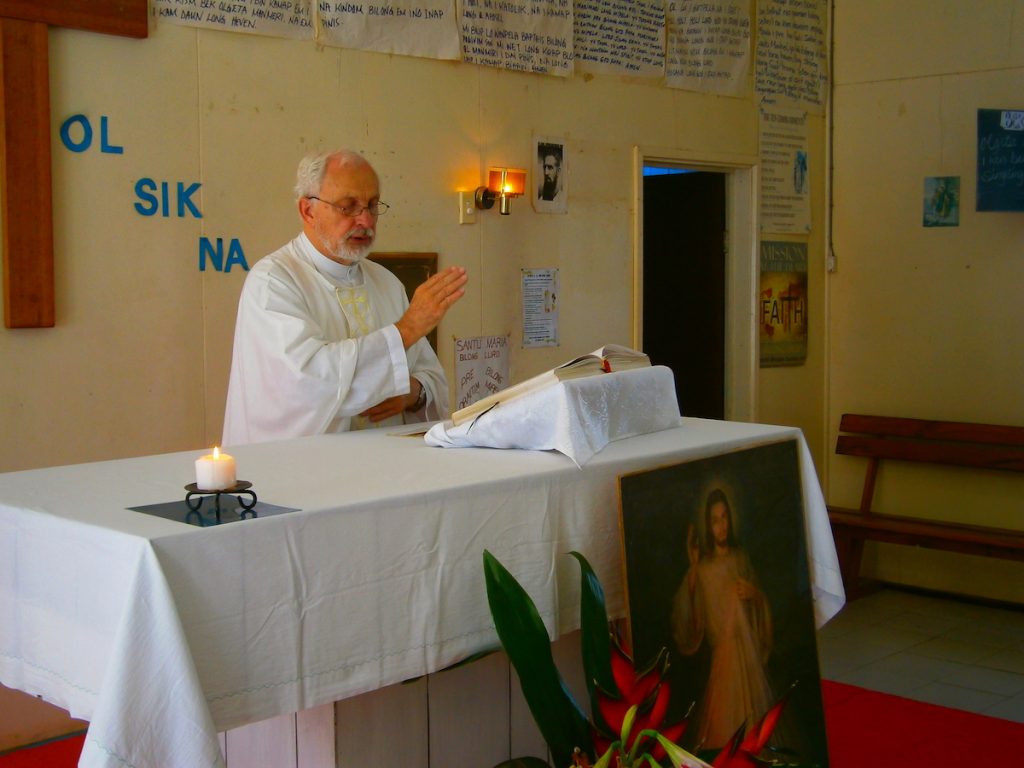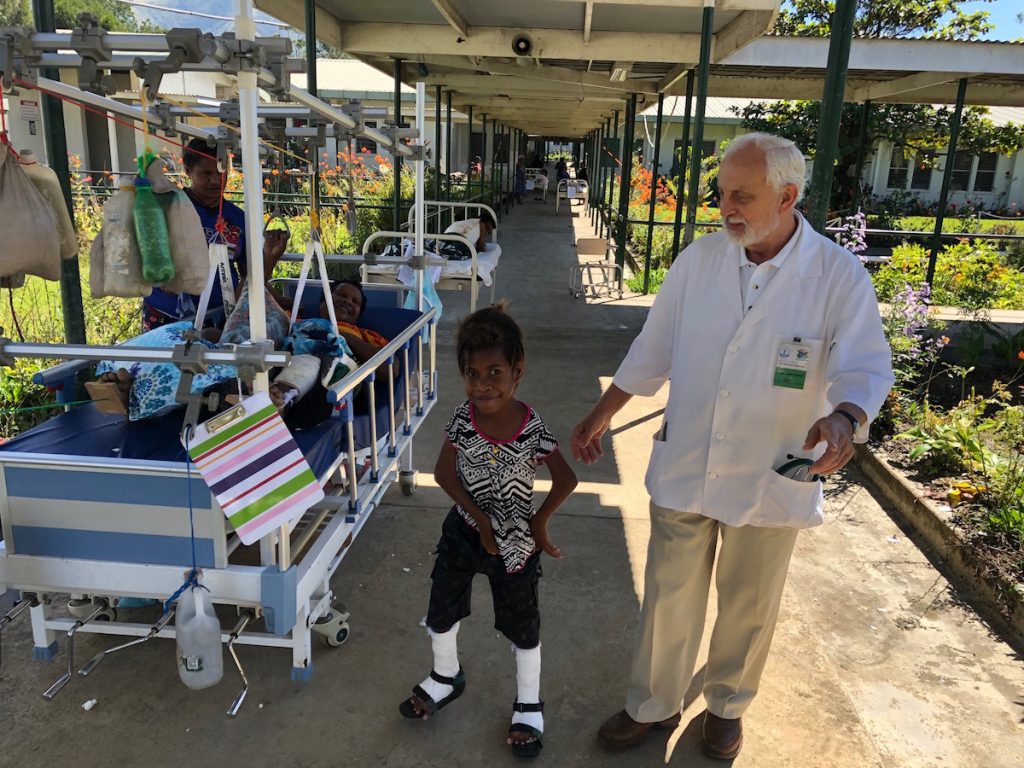For some three decades surgeon Father Jan Jaworski has been ministering to bodies and souls in Chimbu one of the most volatile, remote areas of the Papua New Guinea highlands.
“The repair of bodies is the easier task,” Father Jan told local paper The National.
Father Jan has served as priest for Yombar parish through periods of destructive tribal conflict that has affected his entire congregation.
As he patched up their physical wounds, the Polish priest has more than once wondered about his mission and what good he might be achieving.
It’s a world away from his earlier life.
In 1970, he graduated from medical school in Poznan. He wasn’t then a priest, but he was determined to take his skills where doctors were scarce. When a university friend became a priest and was sent to Papua New Guinea (PNG), it became the young doctor’s objective to do likewise.
But he still required more years of medical training, accumulating skills that he hoped to one day take to PNG.
Finally, in 1984, he thought he was ready. He was in Vienna finishing up a final year of training when he had the opportunity to visit an exhibition on PNG culture that had pictures of Highland men in traditional costume.
”I was a little bit frightened of where I was going, and what I would do,” said Father Jan.
Then ”a friend of mine, a Pallottine father who had been taking spiritual care of me for many years, said, ‘Now is time for you to make a decision — you should enter the priesthood.’ I was ready for this somehow … I never before directly spoke of it, but I was sensing I was going in this direction. I was waiting for a sign from God.’’
He sent off a letter of application to the PNG Health Department, and he put his name down to enter a novitiate to study for the priesthood.
”I made a contract with God — that whatever will happen, I will accept,” he said.


Two weeks before he was supposed to enter the novitiate, the visa paperwork from the PNG arrived and he soon flew to Port Moresby with a sense of relief.
”The priests had said, ‘You have to make a decision. Once you enter our congregation, you will not practice surgery.’ This was very painful for me, but I said, ‘God’s will is God’s will,’” he recollected.
“One of the first people I met in PNG was an Australian missionary father, Father Peter Flynn, who had entered medical school and become a doctor, and was doing some basic surgery. I thought perhaps it is possible for me to be a priest and to practice surgery.’’
‘A doctor, or a priest, but not both’
Four years later, the bishop, who sent him to Rome to the seminary for late vocations, was adamant that when he returned he would need to choose — he could be a doctor, or a priest, but not both.
However, by the time of his ordination by Pope St. John Paul II in 1992, the bishop had undergone a pragmatic change of heart — Father Jan could keep operating.
Over the course of the past 27 years, Father Jan has saved both lives and souls in the PNG, especially in the province of Chimbu.
Along the way he found repairing physical bodies easier than finding ways to fix brutalized communities in a deeply tribal rooted society; a challenge he has met through trial and error over the years.
As part of his role as parish priest he has played the role as peacemaker which has led him to be recognized as a tribal chief — a rare honor for a white man.
Now nearly 70 years of age, Father Jan is noted for his incredible punctuality; believing that if he was late for a minute, somebody’s life would be at risk.
He is also concerned about those girls and women who are victims of pervasive sexual violence in their communities.


In a 2010 interview Father Jan spoke of the challenges that local communities faced after violent bouts of tribal fighting.
”The girls suffer the most. The women suffer the hunger — their gardens, source of sustenance and income, have been lost,” he said.
”Children are sick from different illnesses, brought back to die on their forefathers’ ground. I was angry,” he said.
”I was angry to the extent that I wanted to move the church out of the place, but the bishop said: ‘These people need some support. If you will not do something for young people, they will become raskols.’ So slowly I reconciled with myself, and we tried to do something to avoid another painful incident of tribal fighting in the next election.”
In 2014, a 9-year-old boy was admitted to the Kundiawa hospital after being attacked by his uncle with an axe. The uncle accused the boy of being a ‘sanguma’ (a witch). Fortunately, the priest operated on the boy and he was able to piece the damaged tissues back together.
Father Jan and several church members found a safe place for the boy to be with other children to have the chance to continue his education and develop a normal life.
This was one example of his work, as both medico and priest, in the PNG highlands where he has now become a luminary figure to many.
This is an edited article written by Johnny Poiya and Jo Chandler for Church Alive a publication of the Catholic Bishops Conference Papua New Guinea & Solomon Islands.


